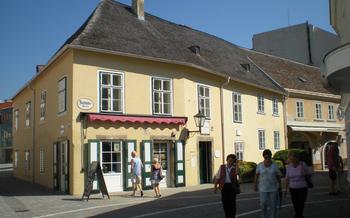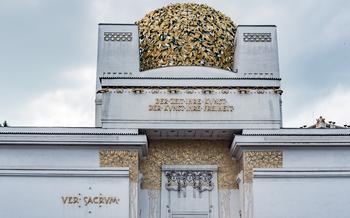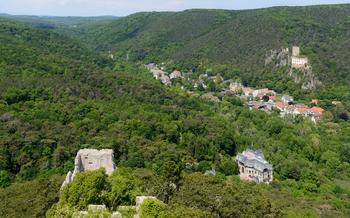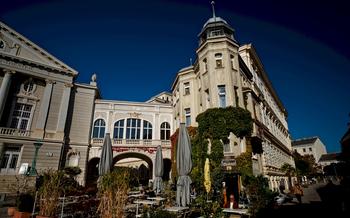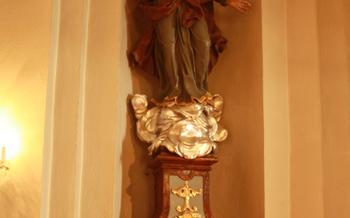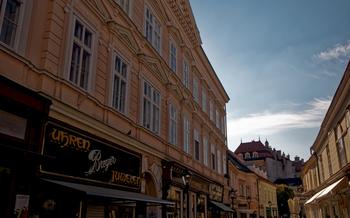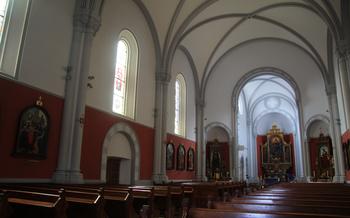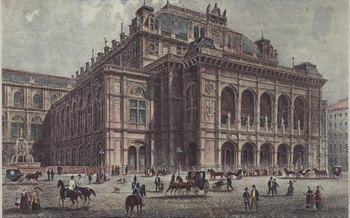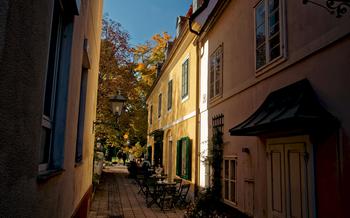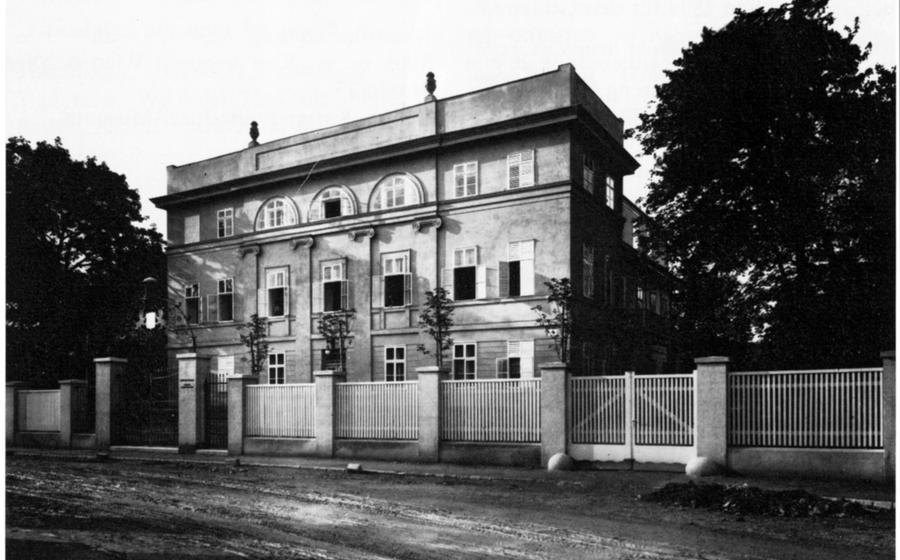
Museum of the Beethoven Haus Association
- History of the Beethoven Haus Association Museum
- Location and Accessibility
- Beethoven's Connection to Baden
- Curated Exhibits: A Journey Through Beethoven's Life
- Virtual Tour: Beethoven's Legacy at Your Fingertips
- Guided Tours: Delving into Beethoven's World
- Musical Performances: Beethoven's Legacy Lives On
- Temporary Exhibitions: Expanding Beethoven's Narrative
- Beethoven's Compositions Inspired by Nature
- Audiovisual Presentations: Bringing Beethoven to Life
- Interactive Displays: Engaging Visitors of All Ages
- Museum Shop: A Treasure Trove of Beethoven Memorabilia
- Admission Fees and Timings
- Accessibility for Visitors with Disabilities
- Insider Tip: Beethoven's Secret Garden
History of the Beethoven Haus Association Museum
The Beethoven Haus Association Museum stands as a testament to the enduring legacy of Ludwig van Beethoven, one of the most celebrated composers in the annals of classical music. Founded in 1953, the museum is housed in the historic Pasqualati House, where Beethoven spent his final summers in Baden bei Wien, seeking respite from the bustling city of Vienna. Driven by a profound reverence for Beethoven's genius, a group of dedicated individuals, including renowned musicians and scholars, established the Beethoven Haus Association to preserve and honor the composer's deep connection to Baden.
Their unwavering commitment to showcasing Beethoven's life and work led to the creation of this exceptional museum, which has become a beacon for music enthusiasts worldwide. Over the years, the museum has undergone meticulous renovations and expansions, ensuring that it remains a vibrant and engaging space for visitors to delve into the extraordinary world of Beethoven.
Location and Accessibility
The Beethoven Haus Association Museum is conveniently located in the heart of Baden bei Wien, at Pfarrgasse Getting there is a breeze, whether you prefer public transportation or private transport. From Vienna, simply hop on the regional train or S-Bahn (S-line) and disembark at the Baden bei Wien station. The museum is a short walk from the station, taking you through the charming streets of Baden.
If you're arriving by car, you'll find ample parking options nearby. The Parkgarage Baden, located at Einfahrt Hauptplatz 1, offers secure parking just a few steps from the museum. Once you've parked, prepare to immerse yourself in the life and music of Ludwig van Beethoven.
Beethoven's Connection to Baden
Baden bei Wien was a frequent retreat and inspiration for Ludwig van Beethoven. The city's tranquility, beautiful surroundings, and thermal springs appealed to the composer, who visited regularly from 1802 until his death in 182Beethoven's connection to Baden is deeply intertwined with his creative process, as he found solace and artistic rejuvenation in its serene atmosphere.
During his stays in Baden, Beethoven often rented a room at the "Zum goldenen Hirschen" inn, which offered a peaceful environment conducive to his work. He composed several significant pieces while in Baden, including parts of his Third, Fourth, and Fifth Symphonies, as well as the piano sonatas "Waldstein" and "Appassionata." The natural beauty of Baden's surroundings, particularly the Helenental Valley, inspired Beethoven's musical compositions, imbuing them with a sense of tranquility and grandeur.
Beethoven's visits to Baden were not limited to composing; he also enjoyed socializing with the local community. He frequently attended concerts and musical gatherings, where he performed and shared his love of music with others. His presence in Baden had a profound impact on the city's cultural landscape, elevating its status as a center of musical excellence.
Curated Exhibits: A Journey Through Beethoven's Life
The Museum of the Beethoven Haus Association houses a treasure-trove of curated exhibits that offer visitors an intimate glimpse into the life and work of Ludwig van Beethoven. Among the highlights are Beethoven's personal belongings, including his writing desk, eyeglasses, and a lock of his hair, which provide a tangible connection to the composer's daily life. The museum also showcases a collection of Beethoven's original manuscripts, including sketches and fragments of his iconic compositions, offering insights into his creative process. Visitors can marvel at the composer's own musical instruments, including his piano, which bears the marks of his passionate playing. Through these carefully curated exhibits, the museum paints a vivid picture of Beethoven's genius and his enduring legacy in the world of classical music.
Virtual Tour: Beethoven's Legacy at Your Fingertips
For those unable to visit the Museum of the Beethoven Haus Association in person, a captivating virtual tour offers a window into Beethoven's life and music. Through the museum's website, visitors can navigate immersive 3D spaces, exploring the exhibits at their own pace. The virtual tour provides detailed views of Beethoven's personal belongings, manuscripts, and musical instruments, allowing viewers to examine them closely and appreciate their historical significance. Interactive features enhance the experience, enabling users to zoom in on specific items and access additional information. Whether you're a Beethoven enthusiast or simply curious about his life and work, the virtual tour offers a unique and accessible way to connect with the great composer's legacy.
Guided Tours: Delving into Beethoven's World
Enhance your visit to the Beethoven Haus Association Museum with a guided tour, an enriching experience that unveils the fascinating life and legacy of the musical genius. Knowledgeable guides, passionate about Beethoven's music and history, lead these tours, providing insightful commentary and anecdotes that bring the exhibits to life.
During the tour, you'll journey through the various rooms of the museum, exploring Beethoven's personal belongings, manuscripts, and musical instruments. Learn about his creative process, his struggles, and his triumphs. Discover the stories behind his iconic compositions, such as the "Moonlight Sonata" and the "Ninth Symphony."
The guides will also shed light on Beethoven's connection to Baden, a town that held a special place in his heart. They'll share anecdotes about his daily life in Baden, his interactions with the local community, and the inspiration he drew from the town's natural beauty.
With their expertise and enthusiasm, the museum guides will transform your visit into a truly immersive experience, allowing you to gain a deeper understanding of Beethoven's life, music, and enduring legacy.
Musical Performances: Beethoven's Legacy Lives On
The Museum of the Beethoven Haus Association not only showcases Beethoven's life and work through exhibits but also brings his music to life through captivating musical performances. Talented musicians grace the museum's intimate concert hall, filling the air with the timeless melodies of Beethoven's compositions. These performances offer visitors a unique opportunity to experience Beethoven's genius firsthand and immerse themselves in the beauty of his music.
Whether it's a solo piano recital, a string quartet ensemble, or a full-scale orchestra, the performances at the museum are meticulously curated to showcase the diversity and depth of Beethoven's musical repertoire. From the delicate nuances of his early sonatas to the powerful crescendos of his symphonies, each performance is a testament to Beethoven's enduring legacy as one of the greatest composers of all time.
Attending a musical performance at the Museum of the Beethoven Haus Association is a truly special experience. The intimate setting, surrounded by artifacts from Beethoven's life, creates a palpable connection to the composer and his music. Whether you're a seasoned classical music enthusiast or simply curious to explore Beethoven's genius, these performances offer an unforgettable journey into the heart of his musical world.
So, if you find yourself in Baden, be sure to check the museum's calendar for upcoming musical performances. Immerse yourself in the sounds of Beethoven's music, let his melodies transport you to another time and place, and experience the enduring power of his compositions in a truly intimate and unforgettable setting.
Temporary Exhibitions: Expanding Beethoven's Narrative
Complementing the permanent collection at the Beethoven Haus Association Museum are captivating temporary exhibitions that delve deeper into the life and work of the renowned composer. These exhibitions offer diverse perspectives, showcasing Beethoven's influence on various aspects of culture and society. Visitors can explore the evolution of his musical style, his relationships with other artists and intellectuals of his time, and the impact of his music on subsequent generations.
Temporary exhibitions often focus on specific themes or periods in Beethoven's life, shedding light on lesser-known facets of his personality and artistry. They may feature rare artifacts, manuscripts, and documents that provide new insights into his creative process and personal struggles. Curators collaborate with scholars, musicians, and artists to create immersive and engaging experiences that bring Beethoven's world to life.
Recent temporary exhibitions have explored topics such as Beethoven's relationship with nature, his influence on the development of Romanticism in music, and his connections to the political and social upheavals of his time. These exhibitions offer a fresh perspective on Beethoven's legacy, inviting visitors to engage with his music and life in new and meaningful ways.
Beethoven's Compositions Inspired by Nature
Beethoven's profound connection with nature manifested itself in his musical compositions. Inspired by the idyllic landscapes and tranquil atmosphere of Baden, he found solace and rejuvenation. The lush greenery, rolling hills, and serene waters provided a backdrop for his creative genius.
The sounds of birdsong, the rustling of leaves, and the gentle flow of the Schwechat River permeated his musical consciousness. These natural elements found their way into his compositions, adding depth and emotional resonance. The Pastoral Symphony, Opus 68, stands as a testament to Beethoven's love for nature. In this symphony, he masterfully depicts the sights and sounds of the countryside, evoking a sense of tranquility and serenity.
The second movement, "Scene by the Brook," features flowing melodies that mimic the gentle murmuring of water. The third movement, "Merry Gathering of Country Folk," captures the joy and camaraderie of village life, with lively rhythms and cheerful melodies. The final movement, "Shepherd's Song: Happy and Thankful Feelings after the Storm," expresses gratitude for nature's resilience after a tumultuous storm.
Audiovisual Presentations: Bringing Beethoven to Life
The Museum of the Beethoven Haus Association enhances its immersive experience with a series of captivating audiovisual presentations that bring Beethoven's life and music to life for visitors. These multimedia displays employ cutting-edge technology to transport visitors to Beethoven's era, showcasing his creative process, influences, and the impact of his compositions on the world of music.
Through meticulously crafted documentaries, visitors gain a deeper understanding of Beethoven's personal and professional journey. Rare footage, historical reenactments, and expert commentary provide a comprehensive narrative of his life, struggles, and triumphs. The museum also features interactive touchscreens that allow visitors to explore Beethoven's works in greater detail. By tapping on specific compositions, visitors can listen to excerpts, view musical scores, and learn about the historical context surrounding each piece.
For a truly immersive experience, the museum's dedicated theater hosts regular screenings of concert films and documentaries. These high-quality productions showcase world-renowned musicians performing Beethoven's symphonies, concertos, and sonatas in stunning venues. The theater's state-of-the-art sound system ensures that visitors can fully appreciate the richness and complexity of Beethoven's compositions.
Whether through documentaries, interactive displays, or concert films, the Museum of the Beethoven Haus Association's audiovisual presentations offer a multisensory journey that brings Beethoven's legacy to life for visitors of all ages.
Interactive Displays: Engaging Visitors of All Ages
The Beethoven Haus Association Museum goes beyond traditional exhibits by incorporating interactive displays that captivate visitors, particularly children. These innovative displays bring Beethoven's life and music to life, making the museum experience both entertaining and educational. Visitors can engage with touchscreens that showcase Beethoven's compositions, allowing them to listen to different pieces and learn about their historical context. Interactive quizzes and games test visitors' knowledge of Beethoven's life and work, making learning a fun and interactive process. The museum also features a "compose your own music" station, where visitors can unleash their creativity and compose their own musical pieces inspired by Beethoven's legacy. These interactive elements transform the museum into a vibrant and engaging space where visitors of all ages can explore Beethoven's genius in a hands-on and memorable way.
Museum Shop: A Treasure Trove of Beethoven Memorabilia
The Beethoven Haus Association Museum houses a well-stocked museum shop where visitors can delve deeper into the life and works of the musical genius. The shop offers a diverse selection of souvenirs, books, and audio recordings related to Beethoven, catering to enthusiasts of all ages and interests.
Among the popular items available are replicas of Beethoven's manuscripts, allowing visitors to take home a piece of his creative process. Music lovers can also purchase recordings of Beethoven's compositions performed by renowned orchestras and soloists, ensuring a lasting auditory experience of his musical legacy.
For those seeking literary insights, the shop offers an array of books and biographies that explore Beethoven's life, his struggles, and his triumphs. These publications provide a deeper understanding of the man behind the music, shedding light on his personal journey and his contributions to the world of classical music.
The museum shop also caters to younger visitors, offering a range of interactive and educational materials that make learning about Beethoven fun and engaging. These include children's books, puzzles, and games that introduce the composer and his music in an accessible and entertaining way.
Whether you're a seasoned Beethoven aficionado or simply curious to learn more about this musical icon, the museum shop offers a treasure trove of items to enhance your appreciation and understanding of his life and work.
Admission Fees and Timings
Admission to the Beethoven Haus Museum is quite affordable, with standard tickets costing around €12 for adults, offering access to all the exhibits and the virtual tour. Discounts are available for students, seniors, and groups, making it accessible to visitors of all ages.
The museum follows a flexible schedule, welcoming visitors from Tuesday to Sunday, during the hours of 10:00 AM to 6:00 PM. It remains closed on Mondays and during certain holidays, so it's advisable to check the museum's website or call ahead to confirm before planning your visit.
To enhance visitors' experience, the museum offers guided tours that delve deeper into Beethoven's life and the significance of the exhibits. These tours are conducted in German and English and are included in the admission fee.
Accessibility for Visitors with Disabilities
The Beethoven Haus Association Museum recognizes the importance of accessibility for all visitors. The museum is fully wheelchair accessible, with ramps and elevators throughout the building. Audio guides are available in multiple languages, including German, English, French, Italian, and Spanish. These audio guides provide detailed descriptions of the exhibits, allowing visitors with visual impairments to fully experience the museum. Additionally, the museum staff is trained to assist visitors with disabilities and ensure that they have a comfortable and enjoyable visit.
Insider Tip: Beethoven's Secret Garden
Nestled within the museum's premises is a hidden gem known as Beethoven's Secret Garden. This tranquil oasis, tucked away from the museum's main thoroughfares, offers visitors a glimpse into Beethoven's private world. Here, amidst the lush greenery and blooming flowers, Beethoven found solace and inspiration for his musical compositions. Take a moment to pause in this serene garden, allowing the tranquility of nature to envelop you, just as it did the great composer himself.
